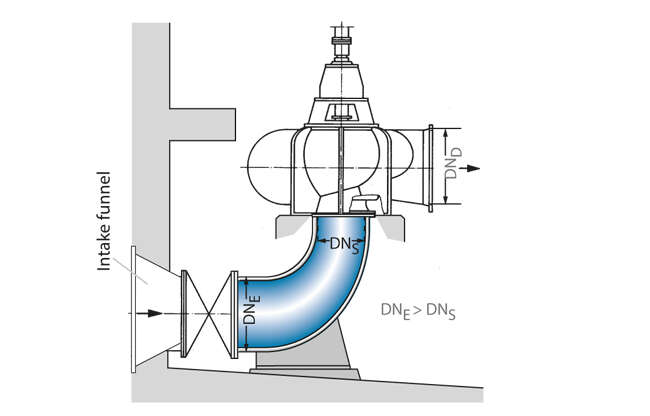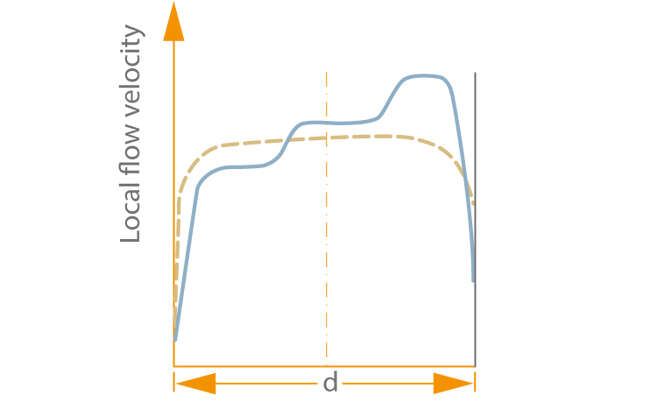Intake elbow
The intake elbow, also referred to as the suction elbow, serves to direct the fluid flow to the pump, usually a volute casing pump via a 90º bend. The intake elbows employed are usually cast or welded standard elbows with constant cross-sections. A drawback of these elbows is that they cannot ensure a regular, disturbance-free flow (see Inlet conditions) downstream of their outlet, which is however required by high specific speed pump impellers. In this case, accelerating elbows are a suitable option. They provide regular flow profiles at their outlet as the fluid's flow velocity is doubled in the deflection zone.
See Fig. 1 Intake elbow

Fig. 1 Intake elbow: Accelerating elbow upstream of a high specific speed volute casing pump
Tubular casing pumps can also be fitted with acceleration elbows but intake chambers are usually preferred.
The intake elbows for large vertical tubular casing pumps are generally made of concrete with wooden formwork or permanent sheet steel formwork. In the first section of the intake elbow (intake funnel), the flow velocity is increased to two to four times its value at the entry. In the deflection zone immediately downstream, it is increased again to two to four times its value immediately upstream of the bend. The strong accelerations have a balancing effect on distorted velocity profiles which develop due to disturbances upstream of the intake elbow. See Fig. 2 Intake elbow and Fig. 6 Cooling water pump

Fig. 2 Intake elbow: Velocity profiles, ______distorted, - - - - - - balanced
Another problem arises with double-entry, single-stage pumps (See Fig. 1 Pipeline pump), fitted with standard elbows. Due to the distortion of the flow profile downstream of a standard elbow, each half of the impeller receives a different type of flow. This may lead to efficiency losses and cavitation or impair the smooth running of the pump. This problem can be avoided by installing an acceleration elbow or by employing a compact elbow design with multiple deflection vanes. See Fig. 3 Intake elbow

Fig. 3 Intake elbow: Intake elbow with multiple deflection vanes upstream of a double-suction horizontal volute casing pump (top view)
